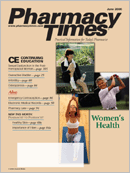DIABETES WATCH
Blood Sugar Control Aids Surgery Recovery
Proper glucose control prior to surgery helps lower the risk of postoperative infections in patients with diabetes. The study included 490 patients with diabetes who major noncardiac surgery. Their glycosylated hemoglobin (HbA1C) levels were measured within 180 days of surgery. Of the patients, 40% had good glucose control. The patients who had poor blood sugar control, however, faced higher incidences of postoperative infections, the study investigators reported in the Archives of Surgery (April 2006).
Postoperative problems were also more prevalent among patients who were older, had higher scores on physical status tests, had wounds classified as "nonclean,"or had operations that took longer. Patients with improved blood sugar control before surgery are more prone to have reduced blood sugar levels after surgery as well.
Patients with Diabetes Not Getting Heart Drugs
Angiotensin-converting enzyme (ACE) inhibitors and angiotensin II receptor blockers (ARBs) are not prescribed often enough for older patients with diabetes, according to a study reported in the Journal of General Internal Medicine (April 2006). To determine the number of older patients with diabetes being prescribed ACE inhibitors and ARBs, the researchers used data from the National Health and Nutrition Examination Survey for 1999 to 2002.
The study included 742 patients aged 55 or older with the disease. All of the participants had at least one good reason for taking an ACE inhibitor or ARB, such as losing protein in their urine, cardiovascular disease, high cholesterol, or smoking. Of the patients, 43% were taking an ACE inhibitor or ARB.
The researchers found that even among individuals with 4 or more indications for the drugs, the chance of being on an ACE inhibitor or ARB was only 53%.
Ulcers More Fatal with Diabetes
The risk of dying appears to increase for patients with diabetes who also have bleeding or perforated ulcers. According to the researchers'hypothesis, patients with diabetes with complicated ulcer disease may face a higher short-term death risk as a result of diabetic blood vessel problems, blurring of symptoms, and a greater risk of overwhelming bacterial infection.
For the study, the researchers reviewed the outcomes of 7323 patients hospitalized for bleeding ulcers and 2061 patients with perforated ulcers. Of the participants, 10% of the bleeding ulcer group and 7% of the perforated ulcer group had diabetes. The results of the study found that the 30-day death rate among the bleeding ulcer group was 17% in the diabetic group, compared with 10% in the nondiabetic group?a 40% increased risk of death for patients with diabetes. In the perforated ulcer group, the patients with diabetes had a 30-day death rate of 43%, compared with 24% for patients without the disease, indicating a 51% increased risk. (The findings were reported in Diabetes Care, April 2006.)
PAD and Poor Diabetes Control
A study of 1894 adult patients with diabetes found that elevated glycosylated hemoglobin (HbA1C) levels are linked with a greater risk of peripheral arterial disease (PAD). Reporting in Diabetes Care (April 2006), the researchers discovered that the risk of hospitalization related to PAD rose with increasing tertiles of HbA1C level, as did the possibility of intermittent claudication?cramping leg pain that happens in patients with PAD.
The results indicated that patients in the second and third tertiles were 53% and 64% more prone than patients with the lowest HbA1C to have PAD. The researchers observed that trends toward higher risk of PAD with elevated HbA1C were apparent for all manifestations of PAD.
Mealtime Levels Tell a Lot
Patients with diabetes may benefit from learning how to manage their blood sugar levels around certain mealtimes. This translates to testing blood sugar levels preprandially (before-meal level) and postprandially (after-meal level) to help patients see the impact of food and portion choices on their blood sugar levels.
The American Diabetes Association recommends mealtime blood glucose levels of 90 mg/dL to 130 mg/dL preprandial and <180 mg/dL postprandial (1-2 hours after the start of the meal). The American Association of Clinical Endocrinologists recommends mealtime blood glucose levels of 110 mg/dL or less preprandial and 140 mg/dL or less postprandial (2 hours after the start of a meal). "High glucose is a toxin no matter when it is," said Daniel L. Lorber, MD, medical director of the Diabetes Control Foundation at the Diabetes Care & Information Center of New York, and director of endocrinology at the New York Hospital Medical Center of Queens. "If you want glucose to be close to normal, you have to treat both the fasting and postmeal levels."
Therefore, physicians should provide patients with tools that help them manage their disease, such as blood glucose meters that store "before" and "after" meals results. The results will help patients and physicians see the effect certain foods have on their blood sugar and help them make the necessary adjustments.

